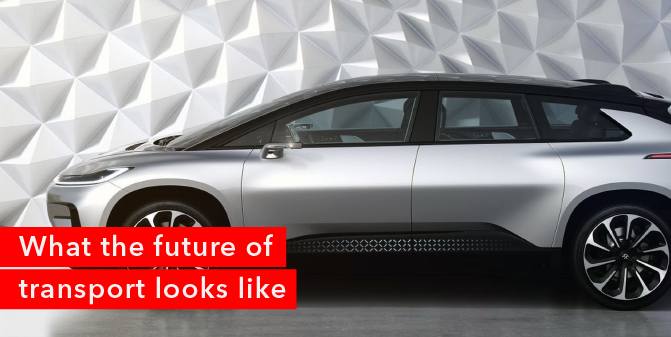What the future of transport looks like
The future of transport has just arrived
How fast exactly is vehicle technology moving? Roughly zero to one hundred kilometres in 2.39 seconds – at least, that’s if the makers of the all-new Faraday Future FF91 electric car are to be believed.
The blazingly fast self-driving supercar was recently unveiled in Las Vegas. It promises such a futuristic driving experience that it makes Tesla look like Fred Flintstone’s footmobile. More to the point, it’s threatening to leave Elon Musk’s electric offering in the shade – or should that be the dust?
Thought it couldn’t get better than Tesla? It does.
If Faraday manages to take its product to market, Tesla could be in for a run for its money. Not only does the FF91 achieve an impressive 600km of range, but it offers a mind-blowing infotainment system that learns your likes and preferences just like your internet browser. The result? The show you were watching at home follows you to your car – and because the Faraday drives itself, you’re all set to keep watching while you complete your commute.
The Faraday parks itself, but not simply in the parking-assist kind of way. According to its manufacturers, you could leave it at the entrance of a parking lot and it would slowly cruise around until it found an open bay. Who needs Uber?
Speaking of which, what does the future of ride sharing look like?
Driverless cars are no longer the stuff of sci-fi flicks
Not crazy about making conversation with your Uber driver? You may not have to for much longer. In 2016, Uber rolled out its first 100 driverless vehicles in the United States. What’s it like to be behind the wheel of a car that steers itself? Find out via Mashable.com.
It’s not only the ride-sharing giant that’s in on the action: according to Forbes.com, Google has already clocked almost 2.5 million self-driving kilometres, and Tesla a staggering 225 million. Perhaps Mr Musk doesn’t have to worry about the Faraday Future just yet, after all.
Although autonomous vehicles are still in their infancy, experts predict that they could become an everyday reality as soon as 2020.
How South African consumers feel about the future of transport
In South Africa, we don’t have to worry just yet about giving up control of the wheel – or how we’ll fill our time once our cars are parking themselves. According to Bizcommunity.com, less than half of South Africans desire limited self-driving technology, and only 39% want full self-driving capabilities. Still, this not-insignificant number is likely to drive massive change in the local vehicle industry as we move into the future – at roughly zero to one hundred kilometres in 2.39 seconds.
Loved these insights? Keep up to date with the latest industry news and trends by following us on Facebook, Twitter and LinkedIn.




